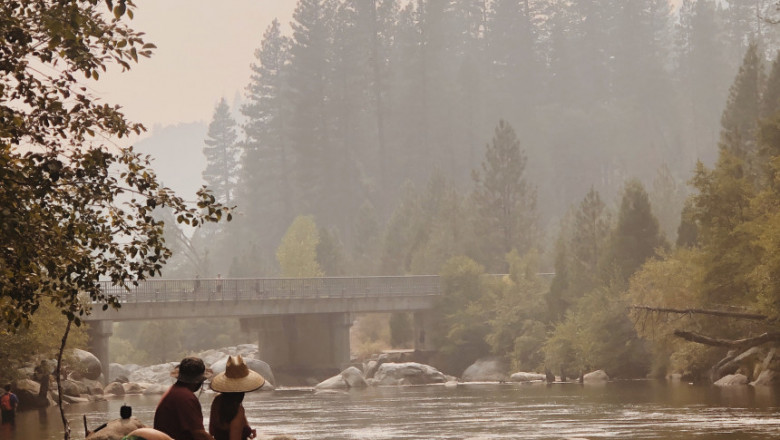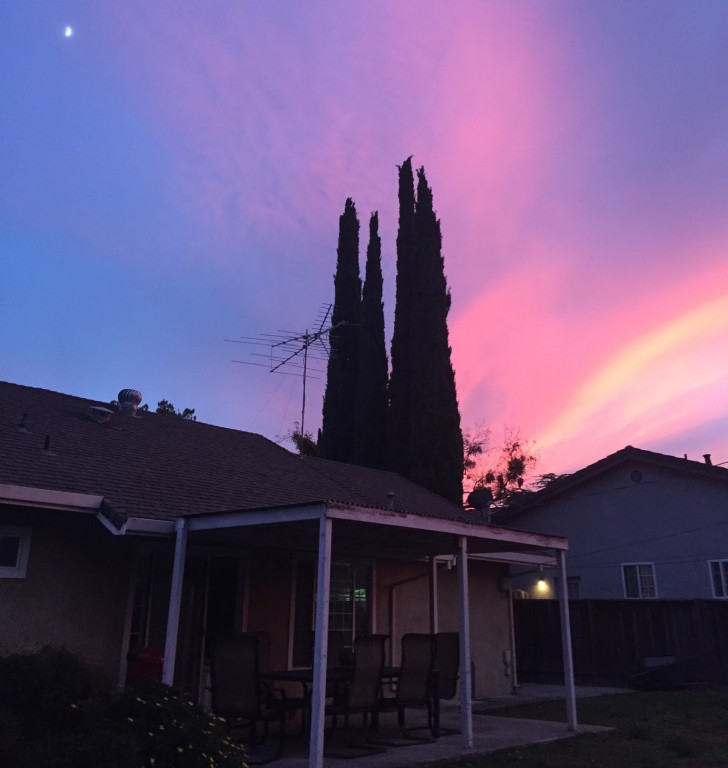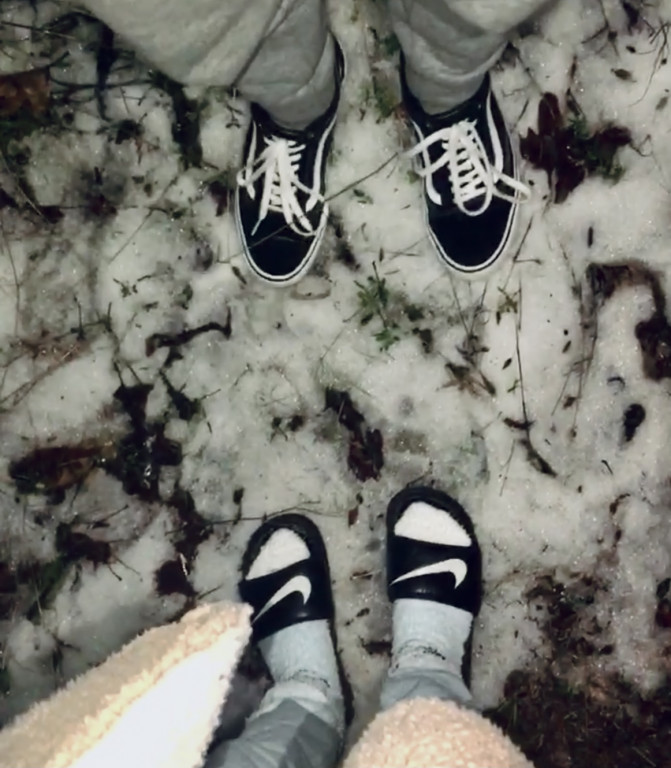
Trees above the Stanislaus River forest are obscured by smoke from the Lightning Complex fire, in August 2022. (Kay Jewler)

Trees above the Stanislaus River forest are obscured by smoke from the Lightning Complex fire, in August 2022. (Kay Jewler)
After living in the scorching heat of Arizona, Taiwan, and Singapore, my family moved to San Jose, California, in 2008. This was a welcome temperate climate-haven after living in harsh heat for my entire life. I never expected that by the time I left San Jose for college, this idyllic paradise would be enduring record-breaking temperatures and an annual wildfire season.
Human-induced climate change has contributed to rapidly increasing temperatures throughout the Southwest region of the United States since 1901. According to the Fourth National Climate Assessment, “The average annual temperature of the Southwest increased 1.6° F (0.9º C) between 1901 and 2016.” In San Jose, six of the 10 average hottest years since 1893 have occurred since 2014. This past summer, San Jose broke its all-time heat record when the city hit 109° F on Sept. 6. This rapid increase in temperature is caused by the overabundance of greenhouse gasses in the Earth’s atmosphere, trapping more heat and causing more extreme climate and weather.

My best friend throughout elementary school lived on the hill near our school. As temperatures cooled each winter, I would giddily wait to see her car drive into school with several inches of fresh snow packed neatly on top. While it didn’t snow in my suburban neighborhood, it was a reliable treat to see those glistening five inches of snow atop her car each year. By my senior year of high school, however, no cars were arriving in the parking lot with that delightful symbol of winter.
When a slight dusting of powder drifted down onto the hill that year, everyone I knew took off immediately after school to play in the anomalous, pitiful excuse for a seasonal luxury. We stomped around in the icy dirt, giggling at the unfamiliar crunching sound, and threw half-frozen snowballs at each other. The warming that has resulted in such pitiful winters is set to continue as current greenhouse gas emissions will likely cause the state to experience warming by more than 6° F by the year 2100.

Rising temperatures in the Southwest have also led to increased wildfires in the region. According to the Fourth National Climate Assessment, the area burned by wildfires across the western US from 1984 to 2015 was found to have been twice what would have burned without climate change. As 2022 has been the driest year in San Jose in the past 128 years, the area is now, more than ever, increasingly susceptible to wildfire. According to CalFire, six of the seven most destructive California fires since 1932 have occurred since 2020.
One day in fifth grade, my friends and I were dismayed to learn that we were not allowed outside during lunch or recess due to the smoke levels from a nearby wildfire. Eight years later, after returning to California from college due to the pandemic, the intensity of my already isolated quarantine escalated when smoke from the SCU Complex lightning fire cast a warm orange tint over the entire Bay Area for a week. I began my virtual classes staring out my window at the endlessly red sun and my ash-covered car parked outside.
The stark comparison between the climate when I first moved to California and when I left 10 years later paints a clear image of how rapidly climate change has affected the lives of many in the area. San Jose has been working to reduce its own carbon footprint on the environment, launching the Climate Smart plan in 2018. The plan aims for the city to be carbon-neutral by 2030, despite its rapid population growth. The city has partnered with over 34 local organizations and stakeholders including Mothers Out Front South Bay, the Committee for Green Foothills, and the Santa Clara Valley Audubon Society to establish their community-centered plan. By creating climate-friendly infrastructure from the outset, including all-electric appliances and community layouts that reduce miles traveled by vehicles, San Jose hopes to reduce its impact on the globe.
Below: A thick shroud of smoke engulfs my neighborhood during the SCU Lightning Complex fire, in 2022. (Kay Jewler)